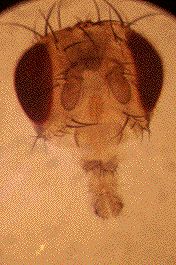Molecular evolution and neutral theory - What is the neutral theory?

Most mutations are deleterious
In the nucleotide sequence of a gene in a living organism, the gene codes for a reasonably well-adapted protein: the protein is unlikely to be a dud if the organism containing it is alive.
Going through all the mutations that can be made in the gene, one nucleotide at a time, each change could be better, worse, or equally as good as the original gene. Most of the changes will be for the worse and have negative selection coefficients. The unpleasant image opposite is of a mutated fruitfly which has lost its body: few mutations are as disastrous as this, but biologists think that most will be deleterious in some way.
What biologists disagree about is the relative frequency of the other two classes of mutations: the neutral and the selectively advantageous. If natural selection has produced most evolutionary change, there must have been many advantageous mutations, whereas neutral mutations must have been rare. If neutral drift has produced most evolutionary change, the relative frequencies are the other way round.
In a gene of 1000 nucleotides, 10 6000 possibles sequences of the gene exist. The protein encoded by the gene will have some function, for example carrying oxygen in the blood. The neutralist view of evolution suggests that, of all these possible molecules, the great majority would fail to carry oxygen at all, and many would do so poorly. Then there would be a minority, of maybe a few 100 different sequences, all very similar to one another, all of which would code for proteins that carried oxygen equally well. What we observe as evolution consists of shuffling round within this limited set of equivalent sequences.
The selectionist alternative is that the few hundred variants are not equivalent: one works better in one environment, another in another environment. Evolution consists of the substitution of one variant for another when the environment changes.
The difference in viewpoint is between people who think that a protein could have a fairly large number of equivalent forms, and those who think that any change in the amino acid sequence, no matter how small, is likely to make a difference in the proteinís function and be under selection.
Richard Dawkins gives his view on the debate.
| Next |



